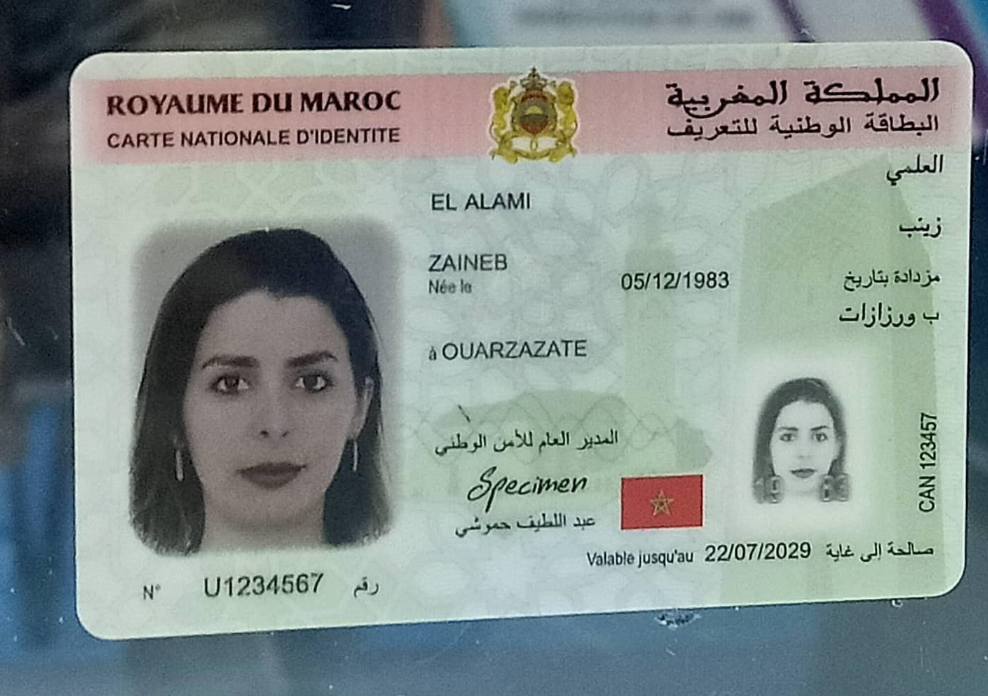This article aims to guide readers on how to generate a sample Canada SIN Number specifically for testing or demonstration purposes. The SIN is a unique nine-digit number that serves as an identifier for individuals in Canada. By understanding the format and rules of generating valid SIN numbers, users can create sample SIN numbers that adhere to the specified guidelines.
The Canadian SIN follows a specific format and includes a check digit that is calculated based on the other eight digits. To generate a valid SIN, it is essential to understand the algorithm used to calculate the check digit. The article will provide an example calculation to illustrate the process.
Additionally, the article will showcase several examples of valid SIN numbers to demonstrate the range of possible combinations. However, it is important to note that certain SIN numbers are restricted and cannot be generated as sample numbers due to privacy and security concerns.
Various techniques exist for generating sample SIN numbers. One method involves utilizing an online SIN generator, which employs a random number generator to create diverse combinations of digits. Another approach is to simulate specific testing scenarios, such as generating sample SIN numbers with invalid check digits or restricted numbers. Using an online SIN generator streamlines this process, providing a convenient and efficient means of generating sample SIN numbers.
In summary, this article serves as a comprehensive guide on generating sample Canadian SIN numbers for testing or demonstration purposes. By following the provided information and guidelines, users can create valid SIN numbers that adhere to the specified format and rules.
SIN Format
The Canadian SIN (Social Insurance Number) is a nine-digit number that follows a specific format. This format includes a unique identifier for each individual. The SIN is used for various purposes, such as employment, taxation, and accessing government services. Understanding the format of the SIN is important to ensure its validity and accuracy.
The format of the Canadian SIN is XXX-XXX-XXX, where X represents a digit from 0 to 9. The first three digits of the SIN are known as the area number and are based on the location where the SIN was issued. The next six digits are the individual identifier, which distinguishes one person from another. The last digit is a check digit, which is calculated using a specific formula based on the other eight digits.
The SIN format is designed to provide a unique identification number for each individual in Canada. This ensures that each person has a distinct identifier for various administrative purposes. It is important to note that the SIN format is strictly regulated and should be used only for authorized purposes and in compliance with privacy and security regulations.
Valid SIN Numbers
Valid SIN Numbers
This section provides an overview of the rules for generating valid SIN numbers in Canada. The SIN is a nine-digit number that serves as a unique identifier for individuals. It is important to follow these rules to ensure the accuracy and validity of the generated SIN numbers.
The algorithm used to calculate the check digit is a crucial part of generating a valid SIN. The check digit is the last digit of the SIN number and is calculated based on the other eight digits using a specific formula. This formula helps to detect errors and prevent the creation of invalid SIN numbers.
To generate a valid SIN number, the following rules must be followed:
- The first digit cannot be 0.
- The second digit must be in the range of 1 to 9.
- The third to eighth digits can be any number from 0 to 9.
- The ninth digit is the check digit, which is calculated based on the other eight digits.
The algorithm for calculating the check digit involves multiplying each digit by a specific weight and summing up the results. The check digit is then calculated as the difference between the sum and the nearest multiple of 10. This ensures that the check digit is always a single digit between 0 and 9.
By following these rules and using the algorithm to calculate the check digit, you can generate valid SIN numbers for testing or demonstration purposes.
Check Digit Calculation
The check digit is a crucial component of the Canadian Social Insurance Number (SIN) as it ensures the integrity and accuracy of the number. It is the last digit of the SIN and is calculated using a specific formula based on the other eight digits. The purpose of the check digit is to detect any errors or discrepancies in the SIN number.
To calculate the check digit, each of the eight digits in the SIN number is assigned a weight. The weights range from 1 to 9, with the first digit having a weight of 1 and the last digit having a weight of 9. The sum of the products of each digit multiplied by its weight is then calculated.
Next, the sum obtained from the previous step is divided by 11. The remainder of this division is subtracted from 11 to obtain the check digit. If the remainder is 0, the check digit is 0. If the remainder is 1, the check digit is also 0. Otherwise, the check digit is the difference between 11 and the remainder.
For example, let’s consider a SIN number: 123-456-789. To calculate the check digit, we assign weights to each digit: 1-2-3-4-5-6-7-8. The sum of the products is 1×1 + 2×2 + 3×3 + 4×4 + 5×5 + 6×6 + 7×7 + 8×8 204.
Next, we divide 204 by 11, which gives us a remainder of 8. Since the remainder is not 0 or 1, we subtract it from 11: 11 – 8 3. Therefore, the check digit for the SIN number 123-456-789 is 3.
It is important to note that the check digit is a crucial component in validating the authenticity of a SIN number. Any errors in the check digit can indicate that the SIN number is not valid or has been tampered with. Therefore, the check digit calculation ensures the accuracy and reliability of the SIN number system.
Example Calculation
An example calculation is provided below to illustrate how the check digit is calculated for a given Canadian Social Insurance Number (SIN). The SIN is a nine-digit number with a specific format that includes a unique identifier for each individual.
To calculate the check digit, follow these steps:
- Start with the first digit of the SIN number and multiply it by 1.
- Move to the second digit and multiply it by 2.
- Continue this pattern, multiplying each digit by its corresponding position (1, 2, 1, 2, etc.)
- If the result of any multiplication is a two-digit number, add the digits together to get a single-digit number.
- Add up all the resulting single-digit numbers.
- Subtract the last digit of the sum from 10.
The result of this subtraction is the check digit. It is the last digit of the SIN number and is used for verification purposes.
For example, let’s calculate the check digit for the SIN number 123-456-789:
| Digit | Multiplication | Result |
|---|---|---|
| 1 | 1 x 1 | 1 |
| 2 | 2 x 2 | 4 |
| 3 | 3 x 1 | 3 |
| 4 | 4 x 2 | 8 |
| 5 | 5 x 1 | 5 |
| 6 | 6 x 2 | 12 |
| 7 | 7 x 1 | 7 |
| 8 | 8 x 2 | 16 |
| 9 | 9 x 1 | 9 |
Adding up all the resulting single-digit numbers: 1 + 4 + 3 + 8 + 5 + 3 + 7 + 1 + 9 41
Subtracting the last digit of the sum from 10: 10 – 1 9
Therefore, the check digit for the SIN number 123-456-789 is 9.
By following this calculation method, the check digit can be verified to ensure the accuracy and validity of a given SIN number.
Valid SIN Examples

Here are several examples of valid SIN numbers that demonstrate the range of possible combinations:
| SIN Number | Description |
|---|---|
| 123-456-789 | A basic example of a valid SIN number. |
| 987-654-321 | Another valid SIN number with a different combination of digits. |
| 555-123-456 | A valid SIN number with a unique combination. |
These examples showcase the different possibilities within the valid format of a SIN number. Each number has nine digits and is separated by hyphens. The specific combination of digits may vary, but as long as the format is followed, the SIN number is considered valid.
It’s important to note that these examples are for demonstration purposes only and should not be used as actual SIN numbers. Generating or using fake SIN numbers is illegal and can result in severe consequences.
If you need to test or demonstrate a system that requires SIN numbers, it’s recommended to use a sample generator or consult with the appropriate authorities to ensure compliance with privacy and security regulations.
To generate valid SIN numbers, it’s crucial to understand the rules and algorithm used for check digit calculation. By following these guidelines, you can create realistic and valid SIN numbers for testing or demonstration purposes.
Restricted SIN Numbers
Certain SIN numbers are restricted and cannot be generated as sample numbers due to privacy and security concerns. These restrictions are in place to protect individuals’ personal information and prevent misuse or unauthorized access to sensitive data. Generating and using restricted SIN numbers can lead to legal consequences and severe penalties.
Restricted SIN numbers include those that are currently assigned to individuals and are actively being used for identification purposes. These numbers are unique to each person and are linked to their personal information, such as their name, date of birth, and address. It is crucial to respect the privacy and confidentiality of these individuals by not attempting to generate or use their SIN numbers without proper authorization.
In addition to actively assigned SIN numbers, there are also specific patterns or combinations that are restricted to ensure the integrity of the SIN system. These restricted patterns may include sequential numbers, repetitive digits, or other easily identifiable patterns that could potentially be exploited by individuals with malicious intent.
It is important to note that the generation and use of restricted SIN numbers can have serious consequences, including legal action and damage to one’s reputation. It is always best to adhere to the rules and regulations set forth by the Canadian government and respect the privacy and security of individuals’ personal information.
Generating Sample SIN Numbers

Generating sample SIN numbers that follow the valid format and rules outlined earlier can be done using various methods. One approach is to use a random number generator to create random combinations of digits. This method ensures that the generated SIN numbers are completely random and have no specific pattern.
Another approach is to generate sample SIN numbers that mimic specific testing scenarios. For example, you can create SIN numbers with invalid check digits to test the validation process. This can help identify any weaknesses or vulnerabilities in the system.
If you are testing a system that requires restricted SIN numbers, you can generate sample numbers that fall into the restricted category. However, it is important to note that these restricted numbers should only be used for testing purposes and should not be used in any real-life scenario.
When generating sample SIN numbers, it is crucial to ensure that they adhere to the valid format and rules. This includes following the specific algorithm for calculating the check digit and ensuring that the numbers are nine digits long and properly formatted with hyphens.
By generating sample SIN numbers, you can effectively test and demonstrate the functionality of systems that rely on SIN numbers. This can help identify any issues or errors and ensure that the system is working as expected.
Random Generation
One method for generating sample SIN numbers is by using a random number generator to create random combinations of digits.
Random generation is a popular approach for generating sample SIN numbers that mimic real ones. By using a random number generator, you can create unique combinations of digits that follow the valid format and rules of a Canadian SIN number.
The process involves generating a random nine-digit number, where each digit can range from 0 to 9. The random number generator ensures that each digit is selected randomly, without any predictable pattern. This randomness enhances the security and uniqueness of the generated SIN number.
Here is an example of a randomly generated SIN number: 512-789-364. As you can see, the digits are randomly selected, creating a unique combination that complies with the valid format.
Using a random number generator for generating sample SIN numbers is a convenient and efficient method. It allows you to quickly generate multiple SIN numbers for testing or demonstration purposes, without the need for manual calculations or specific scenarios.
By leveraging the power of a random number generator, you can ensure that your sample SIN numbers are realistic and representative of valid Canadian SIN numbers. This approach is particularly useful for developers, testers, and educators who require sample data for various applications and scenarios.
Testing Scenarios
When it comes to generating sample SIN numbers for testing purposes, there are various scenarios that can be mimicked to ensure thorough testing of systems and processes. One approach is to create SIN numbers with invalid check digits. The check digit is the last digit of the SIN number and is calculated based on a specific formula using the other eight digits. By intentionally generating SIN numbers with incorrect check digits, it is possible to test the system’s ability to detect and reject invalid numbers.
Another testing scenario involves generating SIN numbers that mimic restricted numbers. Certain SIN numbers are restricted and cannot be generated as sample numbers due to privacy and security concerns. By creating sample SIN numbers that fall within the restricted range, it is possible to test the system’s ability to identify and handle restricted numbers appropriately.
To generate these testing scenarios, a random number generator can be used to create combinations of digits that meet the desired criteria. By specifying the desired conditions, such as an invalid check digit or a restricted number range, the generator can produce sample SIN numbers that closely resemble real-world scenarios for testing purposes.










